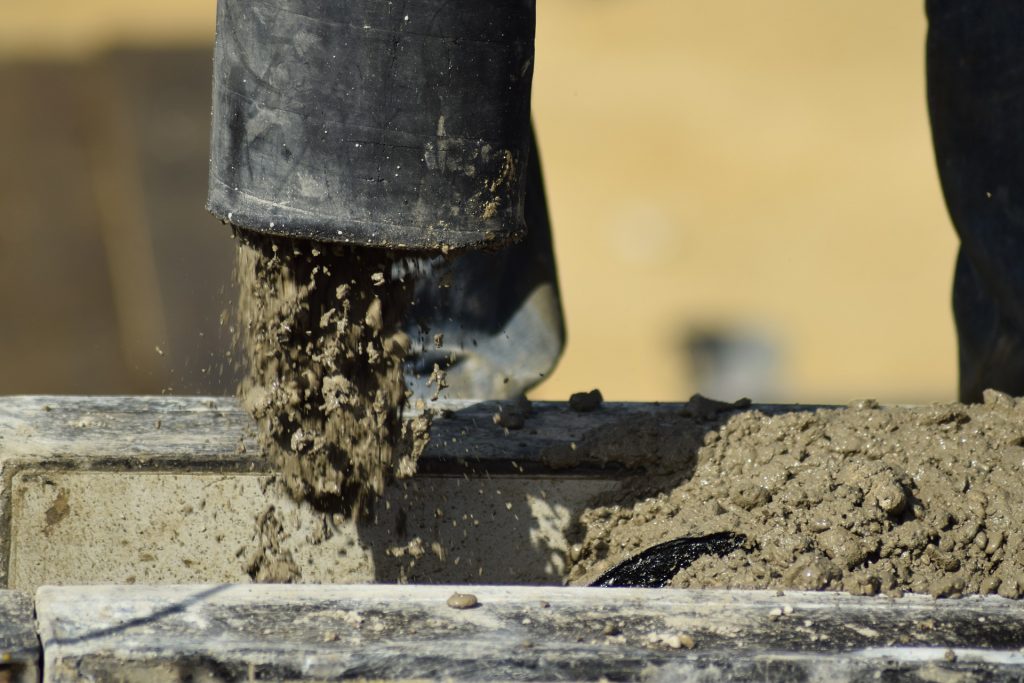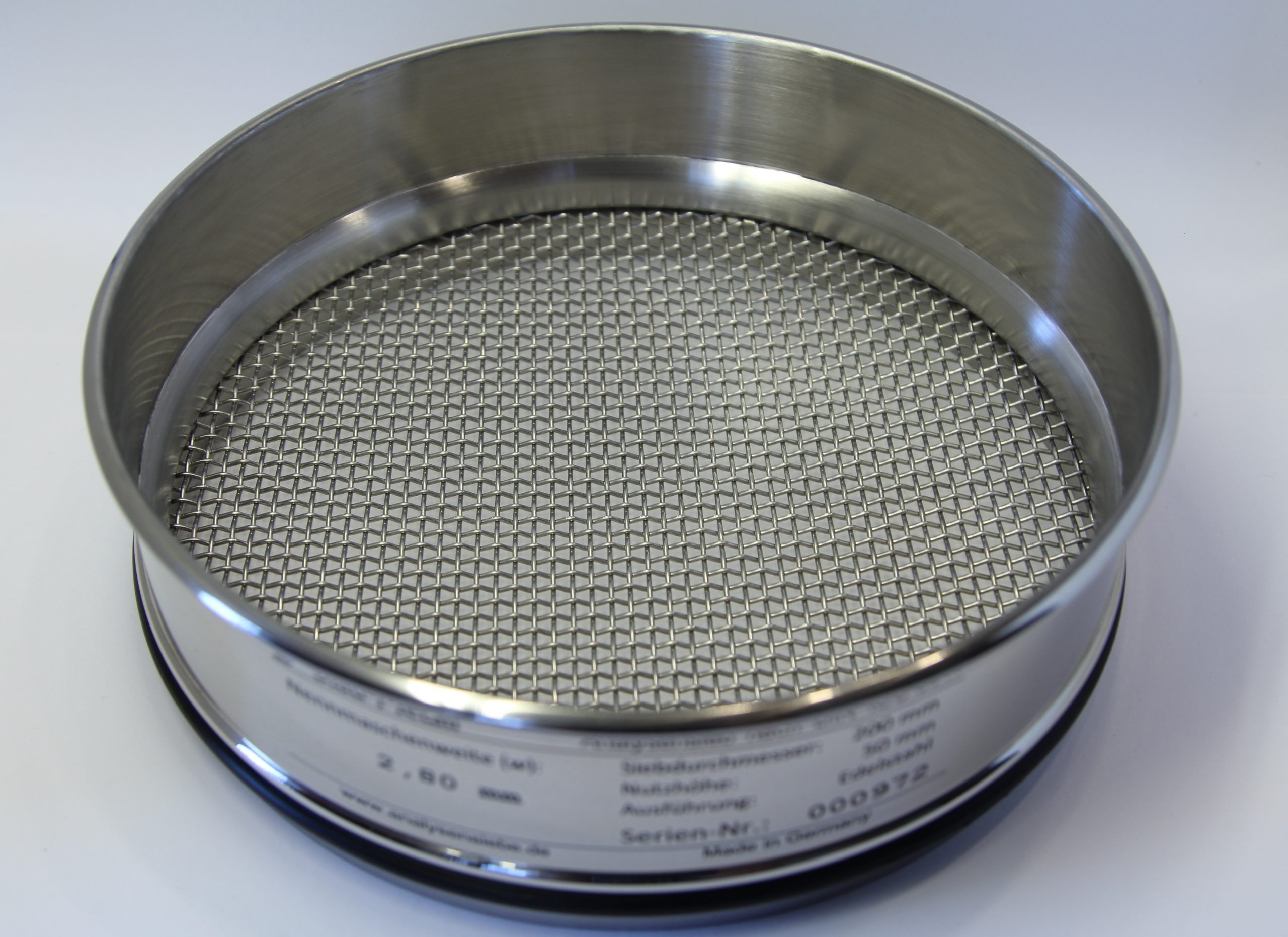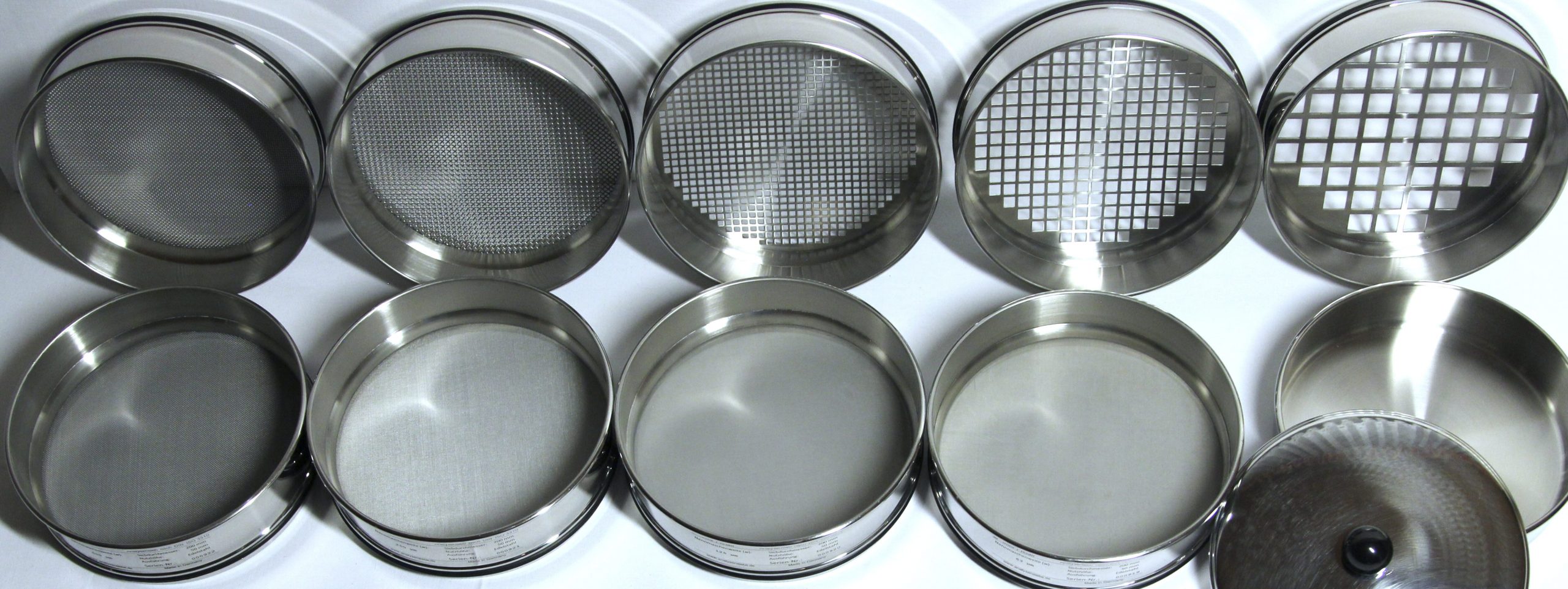 In the construction sector, aggregates refer to a granular mixture which can be combined with water and cement to produce concrete. Depending on the requirements of the cement as the end product, aggregates must possess certain characteristics to yield the desired physical and static properties of the concrete which is of great importance to the structural stability of a given building project. Particular attention when analyzing aggregates for their suitability for concrete is paid to two vital parameters: grain gross density and particle size distribution. For the production and testing of aggregates for concrete the following technical standards apply:
In the construction sector, aggregates refer to a granular mixture which can be combined with water and cement to produce concrete. Depending on the requirements of the cement as the end product, aggregates must possess certain characteristics to yield the desired physical and static properties of the concrete which is of great importance to the structural stability of a given building project. Particular attention when analyzing aggregates for their suitability for concrete is paid to two vital parameters: grain gross density and particle size distribution. For the production and testing of aggregates for concrete the following technical standards apply:- EN 12620: Aggregates for concrete; German and English version prEN 12620:2015
- DIN 1045: Concrete, reinforced and prestressed concrete structures - Part 2: Concrete - Specification, properties, production and conformity - Application rules for DIN EN 206-1
- EN 206: Concrete - Specification, performance, production and conformity
- For concrete used in road construction, additional requirements are imposed by application-specific technical standards such as the German TL Gestein-StB and ZTV Beton-StB 07
The sieves that are to be used for screening of aggregates for concrete are typically referred to as primary and expansion sets of sieves with the primary set including all sieve sizes specified in EN 933-2:1996 (with the exception of 63µm) and the two expansion sets encompassing aperture sizes located between those of the primary set to increase measurement resolution when required. According to German guidelines, conventional analysis for concrete is performed with the sieves of the primary set plus Expansion Set #1; Expansion Set #2 is only used for detailed classification of grain size distribution and determination of flakiness index.
 Classification of physical properties of aggregates via screening analysis aim to determine two absolute parameters: grading index (k) and cumulative sieve throughput (D-Sum) [Cumulative sum of sieve throughput in Vol-%.] which have been deemed mandatory specifications for aggregates used in the construction sector. The use of test sieves that conform with ISO 3310-1 (for woven wire cloth sieves) and ISO 3310-2 (for perforated plate sieves with square apertures) has also been declared obligatory by the aforementioned technical standards governing the use of aggregates for concrete production.
Classification of physical properties of aggregates via screening analysis aim to determine two absolute parameters: grading index (k) and cumulative sieve throughput (D-Sum) [Cumulative sum of sieve throughput in Vol-%.] which have been deemed mandatory specifications for aggregates used in the construction sector. The use of test sieves that conform with ISO 3310-1 (for woven wire cloth sieves) and ISO 3310-2 (for perforated plate sieves with square apertures) has also been declared obligatory by the aforementioned technical standards governing the use of aggregates for concrete production.
Aggregates are also classified with respect to the fraction of fines contained within them since fines can have a significant effect on the structural properties of the finished product. As such, the fines fraction of aggregates must also be declared by the producer when delivering the material for use in concrete production. According to technical standards, fines are defined as the mass percentage passing through a 63 µm woven wire cloth sieve conforming with ISO 3310-1 upon which the aggregate can be classified according to the different F-Categories.
Filler aggregates (consisting of inactive anorganic compounds) made from quartz powder or limestone powder are also to be analyzed with respect to grain size distribution. As defined in EN 933-10 (Tests for geometrical properties of aggregates - Part 10: Assessment of fines - Grading of filler aggregates (air jet sieving), particle sizes in filler are to be determined using at least three test sieves (2,0 mm, 125 µm, 63 µm) conforming with ISO 3310-1.
Blau-Metall laboratory test sieves in accordance with ISO 3310-1/2 fulfil all requirements of EN 933-2 and detailed optical inspection guarantees a high degree of statistical certainty for gradation analysis in the construction industry.
Primary Sieves for Gradation Analysis of Aggregates for Concrete
Stainless Steel, Standard Delivery Time: ~10 Days
| Article | Standard | Sieve Diameter |
|---|---|---|
| Test Sieve Square Apertures 63,0 mm | ISO 3310-2 | 200, 300, 400 mm |
| Test Sieve Square Apertures 31,5 mm | ISO 3310-2 | 200, 300, 400 mm |
| Test Sieve Square Apertures 16,0 mm | ISO 3310-2 | 200, 300, 400 mm |
| Test Sieve Square Apertures 8,0 mm | ISO 3310-2 | 200, 300, 400 mm |
| Test Sieve Square Apertures 4,0 mm | ISO 3310-2 | 200, 300, 400 mm |
| Test Sieve Woven Wire Cloth 2,0 mm | ISO 3310-1 | 200, 300, 400 mm |
| Test Sieve Woven Wire Cloth 1,0 mm | ISO 3310-1 | 200, 300, 400 mm |
| Test Sieve Woven Wire Cloth 500 µm | ISO 3310-1 | 200, 300, 400 mm |
| Test Sieve Woven Wire Cloth 250 µm | ISO 3310-1 | 200, 300, 400 mm |
| Test Sieve Woven Wire Cloth 125 µm | ISO 3310-1 | 200, 300, 400 mm |
| Test Sieve Woven Wire Cloth 63 µm | ISO 3310-1 | 200, 300, 400 mm |
| Collecting Pan | 200, 300, 400 mm |
Expansion Sieve Sets for Gradation Analysis of Aggregates (ISO 3310-2)
Test Sieves with Perforated Plates, Square Openings, Stainless Steel, Delivery Times Vary
Expansion Set 1
| Aperture | Standard | Sieve Diameter |
|---|---|---|
| Square, 45,0 mm | ISO 3310-2 | 200, 300, 400 mm |
| Square, 22,4 mm | ISO 3310-2 | 200, 300, 400 mm |
| Square, 11,2 mm | ISO 3310-2 | 200, 300, 400 mm |
| Square, 5,6 mm | ISO 3310-2 | 200, 300, 400 mm |
Expansion Set 2
| Aperture | Standard | Sieve Diameter |
|---|---|---|
| Square, 40,0 mm | ISO 3310-2 | 200, 300, 400 mm |
| Square, 20,0 mm | ISO 3310-2 | 200, 300, 400 mm |
| Square, 14,0 mm | ISO 3310-2 | 200, 300, 400 mm |
| Square, 12,5 mm | ISO 3310-2 | 200, 300, 400 mm |
| Square, 10,0 mm | ISO 3310-2 | 200, 300, 400 mm |
| Square, 6,3 mm | ISO 3310-2 | 200, 300, 400 mm |
Test Sieves for Analysis of Filler according to EN 933-10
Stainless Steel, Diameter: 200 mm, Delivery Time: ~10 Days
| Article | Standard | Sieve Diameter |
|---|---|---|
| Woven Wire Cloth Sieve 2,0 mm | ISO 3310-1 | 200, 300, 400 mm |
| Woven Wire Cloth Sieve 125 µm | ISO 3310-1 | 200, 300, 400 mm |
| Woven Wire Cloth Sieve 63 µm | ISO 3310-1 | 200, 300, 400 mm |
 German Website
German Website 
